

![]()
BART
Stronger Than Ever
Mother Nature provides few guarantees but this much is certain: A major earthquake will strike the Bay Area. Precisely when, where and how strong it will be are mysteries, but BART isn’t waiting to find out.
Instead, we are employing a two-pronged approach to prepare for the inevitable: an ambitious plan to strengthen the most vulnerable parts of the transit system and a cutting-edge test of an earthquake early warning system. While the two initiatives are very different, they both address BART’s mission number one, safety.
VOTE RETURNED DIVIDENDS
“Earthquake safety, passenger safety and comfort, running the system efficiently—that’s BART’s core business,” said BART Board Director James Fang, the longest serving Board member.
“I think the August 24, 2014, Napa earthquake and the fact that it was business as usual for BART that morning are a magnificent indication of the dividends we are giving the Bay Area thanks to the voters who gave us roughly a billion dollars 10 years ago.”
BART’s earthquake preparations are a direct result of an historic vote of confidence. On November 2, 2004, voters in Contra Costa, San Francisco and Alameda Counties approved Measure AA, which allowed BART to issue general obligation bonds to fund up to $980 million of the $1.2 billion total cost of earthquake safety improvements.
MORE STRINGENT CRITERIA
The Earthquake Safety Program addresses the original system completed in 1972 because system extensions built since the early ‘70s used more stringent seismic criteria than the original system.
The highest priority for upgrades is the Transbay Tube, the very core of the BART system. Significant work is already complete and soon installation of an internal liner will begin in the tube.
Most of the work is complete on 22 miles of elevated tracks, including 1,818 support columns, and at 34 stations, primarily in Alameda and Contra Costa Counties.
AN EARLY WARNING
Meantime, BART has been working with the University of California, Berkeley to test a concept that was once a dream: a motion-based warning system that signals waves from a quake are approaching.
The system has about 300 underground sensors. When a seismic event occurs, information is transmitted over computer networks just seconds before the energy from the quake arrives in the areas surrounding the epicenter.
“By partnering with Cal and getting that extra lead time, it allows us to slow trains down, possibly preventing derailments, preventing injuries, keeping the system whole, “ said BART Board Director John McPartland, a nationally recognized supporter of earthquake early warnings. “Even a few seconds warning would be crucial.”
FIRST IN THE NATION
That BART is the first transit system in the nation to test the concept is no surprise—safety is what we do and who we are.
—James K. Allison
![]()
First Person: “It was a watershed event.”
Editor's note: Retiree Mike Healy was BART spokesman for 32 years.
More often than not one remembers down to the very second what he or she was doing when an historic event takes place. Loma Prieta was just such an event. At the moment the temblor hit I was standing just outside my office located one floor above ground level at the old Lake Merritt headquarters.
It was a scary 15 seconds as the building shook. The shrill sound of screams reverberated across that section of the building as staff members scrambled for cover. I knew all hell was about to break loose, and it did. The phones began to ring off their hooks as the news media descended on us. A section of the Bay Bridge and the Cypress Freeway were down. What was happening with BART?
I immediately went down to the Central Control Room to get an update and take calls. For the next 36 hours I was either on the phone reporting on service or in my office preparing full page information ads for the newspapers aimed at new riders and letting the world know we were operating 24 hours a day until the bridge reopened.
It was an exciting period because I knew we, all of the system’s employees, were pulling together to make it happen. BART’s effort was heroic. You could feel the organization’s great sense of pride. It was a watershed event for the District.
—Mike Healy
.
![]()
Earthquake Safety Tips
Where will you be and what will you do when the next big earthquake hits? Taking time to consider these questions now could help if you ever do find yourself in an earthquake.
First and foremost, know that BART has a thorough emergency plan that we practice, refine and share with other agencies.
“The BART Operations Control Center, Train Operators, Station Agents, supervisors and police, all train on a regular basis to develop teamwork,” said Operations Control Center Manager Fred Edwards II. “Our mission and our obligation is to ensure the passengers’ and our co-workers’ safety.”
LISTEN FOR INSTRUCTIONS
That’s one reason why the first guideline in a BART emergency is to follow instructions from BART personnel. The BART Operations Control Center is in constant communication with trains and Station Agents and is in the best position to manage emergencies and provide direction for the public.
ON A TRAIN
If you’re on a train during an earthquake, Train Operators will follow BART’s established emergency plan and provide you with important information. Sit down or grab a handhold to avoid injury. If an evacuation is necessary, emergency response personnel will coordinate.
IN A STATION
If you’re in a station during an earthquake, back away from the edge of the trackway. If you’re in the station concourse, don’t proceed to the platform. Instead, prepare to evacuate the station under the direction of BART personnel.
TRY TEXTING
No matter where you are, emergency experts recommend using text messaging instead of cell calls to communicate with family and loved ones in an emergency, said Marla Blagg, the BART Police Department’s Emergency Preparedness Program manager.
“Cell networks can be overwhelmed if everyone’s trying to call at the same time; text messages can be more efficient.”
FLASHLIGHT APP
Marla also suggests if you have a smart phone, to download a flashlight app which can aid you if you find yourself in low light conditions after an earthquake.
A wise person once said while it never hurts to hope for the best, it always helps to prepare for the worst.
—James K. Allison
Behind the Scenes of BART’s Role
as Lifeline for the Bay Area
By MELISSA JORDAN
BART Senior Web Producer
Like any 17-year-old, the BART system of 1989 was growing in spurts, finding its way, confident but not yet tested by the toughest of tests. On Oct. 17, 1989, and in the weeks that followed, the BART system came of age, proving its maturity and mettle as a lifeline for the Bay Area after the tragic Loma Prieta earthquake.
This is the story of how BART did it, with behind-the-scenes memories never before reported publicly from people at all levels, from executives to front-line workers. If you were here you may remember it differently. Twenty-five years is a long time and much has been lost in the fog of memory.
The two additional stories at left explain how BART has become even better equipped to withstand quakes and provide tips for you on how to prepare. It is a question of when, not if, another massive quake will strike, and the next one may be centered closer. Earthquakes are violent and difficult to predict. Loma Prieta was a tragic time when many lost their lives, including members of the BART extended family. We hope that reconstructing this story, a quarter-century later, will record an important chapter in BART's history.
AN UNUSUAL DAY
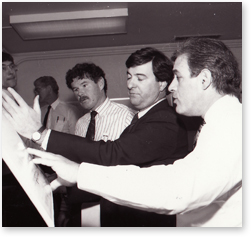 That Tuesday was already high-adrenaline for BART, preparing for large crowds attending the second game of the "Battle of the Bay" World Series between the San Francisco Giants and Oakland A's. Things were running smoothly and according to plan. Frank Wilson, the newly hired general manager who hailed from the East Coast, had been on the job for only about five months. "I was the new kid on the block," Wilson recalled. "I had just learned where the bathrooms were."
That Tuesday was already high-adrenaline for BART, preparing for large crowds attending the second game of the "Battle of the Bay" World Series between the San Francisco Giants and Oakland A's. Things were running smoothly and according to plan. Frank Wilson, the newly hired general manager who hailed from the East Coast, had been on the job for only about five months. "I was the new kid on the block," Wilson recalled. "I had just learned where the bathrooms were."
What's more, he had brought on a new top deputy and top operations manager who both had their first day of work Monday, Oct. 16. Wilson said he had kept their schedules free to let them walk around and meet people, but called a 5 p.m. meeting in his office on that fateful Tuesday.
"They sat on each end of the sofa in my office; I sat in the chair facing them," Wilson said. Four minutes later, everything changed: "You could feel the building tremble. A built-in bookcase became detached from the wall and books were flying everywhere."
A civil engineer by training, Wilson saw a corner of the building "distorted out of 90-degree angles and I knew for certain that part of this building was going to fall apart. I had studied earthquakes as a civil engineering major. You can know the theory of it all, but there's a world of difference between the theory and the actual experience,’’ Wilson said in a phone interview from Arizona, where he is president and CEO of One Vision Enterprises LLC.
By instinct the three men went to the operations control center, the nerve center of BART where, to this day, calm and experienced experts watch over the entire system, similar to an air traffic control operation. "It was controlled mayhem," Wilson recalled. "There were reports of the bridge being down, flooding and fires in the city, we knew it was serious. We thought, 'If the damage was that severe around us, what has BART sustained?' It was all hands on deck to assess safety and find out how we were going to get back into service."
THE INSPECTIONS
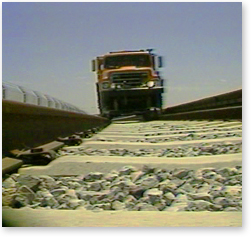 Far from the executive suite, Duane Condit was an electrical maintenance foreworker on swing shift at the Oakland shop maintenance facility. He had planned to drive to San Francisco for an assignment, but was a little behind on his paperwork so was still in the shop at 5:04 pm.
Far from the executive suite, Duane Condit was an electrical maintenance foreworker on swing shift at the Oakland shop maintenance facility. He had planned to drive to San Francisco for an assignment, but was a little behind on his paperwork so was still in the shop at 5:04 pm.
“Everything shook really hard, very violently,” he recalled. “The concrete floor was undulating like waves in the ocean. Right away I contacted Central Control and asked, ‘What can I do to help?’ “
Condit’s response was typical. All through the system, where phone lines were still working, employees were calling in to ask for earthquake assignments. Condit was sent out with extra flashlights and batteries for agents at stations on the stretch from Fruitvale to San Leandro. He also was instructed to do a visual inspection of the aerial trackway structures.
On radios, TVs, and by word of mouth, reports were going around of massive damage: collapsed bridge, pancaked freeways, fires and flooding. It took courage to drive slowly under concrete towers without knowing what shape they might be in, but similar actions were happening throughout the BART system, in tunnels and the tube, above ground and below.
“I looked up to see if anything was damaged, and looked at the ground to see if anything had fallen,” Condit said. The only damage he found was a chunk of concrete that fell at Coliseum Station. He walked along the area near the bridge to the A’s stadium and determined the damage was only cosmetic, not a risk to the structural integrity. “It was pretty amazing,” he said. “Our system held up.”
Helicopters were borrowed from other agencies, like East Bay Parks and Recreation, to assist in inspections. A wave of initial relief, then a growing sense of responsibility for maintaining service, swept over BART staff.
THE EVACUATIONS
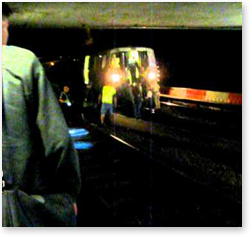 Central Control had put all trains on hold while initial damage assessments were conducted. The plan was to inch each train along, separately, to its next station so passengers could get off safely. In those days without widespread internet use and cellphones, people initially had little grasp of the magnitude of what had happened.
Central Control had put all trains on hold while initial damage assessments were conducted. The plan was to inch each train along, separately, to its next station so passengers could get off safely. In those days without widespread internet use and cellphones, people initially had little grasp of the magnitude of what had happened.
Donna “Lulu” Wilkinson, an experienced train operator, was barreling through the Transbay Tube at 80 miles per hour in the cab of a 10-car train when the quake hit.
“I didn’t even feel it,” she recalled. She was about halfway through to San Francisco when she got the order to stop and hold her position.
It was routine procedure (and remains so) to do a short hold after any earthquake, even smaller ones, and passengers were familiar with that routine. “They didn’t panic,” she said. “I got on the intercom and told them we were holding for a quake and would be moving shortly.”
The design and strength of the tube, an engineering marvel sunk into mud on the bottom of the bay, had insulated the train and its passengers from feeling the earth’s movements.
“The tube absorbed the shock,” former General Manager Wilson recalled. “When the engineers and planners first built the system, they were criticized by some from the outside that it was too expensive and unnecessary. But how much is a life worth? How much was it worth to keep people moving between Oakland and San Francisco?”
It was not only the tube. The entire system held. Employees and riders, while in a state of shock and disbelief, found reassurance when they knew that BART would be running.
Eugene “Gino” Pepi was a station agent at the time, but off duty that day. He lived near the 24th St./Mission BART Station and hurried there, in shorts on that warm fall day, to help.
“We were hearing a lot of things and didn’t really know the magnitude of what had happened,” he said. “We cleared people out of the station so it could be inspected. Everyone was asking, ‘When will BART be running again?’ It was on everyone’s minds because BART is so crucial to the Bay Area.”
Gary Cagaanan was a BART Police officer working at Balboa Park Station at the time of the quake; his assignment was crowd control for the World Series. He was redeployed to a patrol car down Market Street to help riders and ensure safety in the busy San Francisco stations. “It was so surreal,” he said. “People were lined up at stores to buy food and water. They were hunkered down in stations with nothing but candlelight. They were in shock, asking ‘How will I get home?’”
Angel Torres is another retired BART Police Officer who was patrolling the downtown Market Street stations that day with his partner. "We came to Powell Street and did a basic security check and then it was a fairly nice day so we decided we were going to go up to street level," he remembered. "We were stopped by a couple of tourists who wanted some directions so we began talking to them and then all of a sudden the ground stated to shake. It was so bad that I had to grab a pole to hang on to."
"I was looking down Market Street, and I could see all kinds of debris coming out from between the buildings; the buildings were literally oscillating and shaking back and forth.”
THE RECOVERY
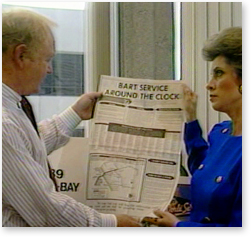 In his annual report for that year, Wilson summed up how BART quickly was up and running on a 24-hour emergency schedule to serve the public less than 12 hours after the quake hit.
In his annual report for that year, Wilson summed up how BART quickly was up and running on a 24-hour emergency schedule to serve the public less than 12 hours after the quake hit.
“People, teamwork and dedication,” he wrote. “Not only did they get BART back on track, they kept it there for more than a month while the Bay Bridge was out of service, carrying more than 10 million passengers to their jobs and homes around the clock.”
In the recent interview, Wilson recalled the extraordinary effort that lay behind that service.
“We gave a directive to use every single car that was safe to run. The folks who were given the opportunity to hold the pieces together were really amazing. It’s as if they had the performance manual emblazoned in their brains. They just instinctively did it.”
BART ran full-page advertisements in local newspapers explaining the extra service, as well as the addition of supplemental parking for all the new riders. “The day after the earthquake I didn’t get complaint calls from riders,” Wilson remembered. “I got complaints from people who lived near stations that riders were parking on their lawns.”
He remembers going out to Golden Gate Fields racetrack, without lawyers around, but with such urgency to add parking that he struck a deal to use many of their spaces and signed the agreement on the back of an envelope.
Retired Police Officer Torres remembers a recovery period of long, hard, but gratifying days."The next month was 12-and-a-half-hour days, six days a week. There was a lot of work to do; we had to look out for passengers, look out for property. I think everybody rose to the occasion. We were the lifeline between San Francisco and Oakland. BART was a real lifeline. It served the community; it was the one reliable source of transportation—not only transportation for people, but food and supplies.”
Rider Lee Trampleasure was part of that community effort. "I was working for Uprisings Bakery in Berkeley, but most of my delivery routes were in San Francisco,” he recalled. “I heard on the radio that Project Open Hand was preparing meals in their kitchen in SF and needed to get them to the Red Cross shelter in Oakland. Their plan was to BART the food over, but they needed people with vans to bring the food from West Oakland BART to the Red Cross. I showed up at West Oakland BART at the designated time, and joined a caravan of vehicles helping to move the food. I'm sure there are many people in Oakland who are thankful that BART was open and running so quickly and capable of carrying these hot meals under the bay.”
Retired Train Operator Wilkinson remembered it as a time of great teamwork. “Everybody had to pitch in at BART because it was so important,” she said. “The mechanics, the ones that fixed the trains were working 12-hour shifts seven days a week to keep the trains running. The system service workers were doing all they could to keep the trains clean, the stations clean. Everybody—everybody—at BART worked their backsides off to make sure the public could go to where they needed to be and it was a pleasure, we felt needed. A lot of times in an emergency like that people sit and say, what can I do? Well we didn't have to ask that, because BART was there doing it.”
Colin McDonald, now retired, was a BART engineer at Daly City Station at the time. “It was a special time for me, the sadness of the lives lost coupled with the pride I felt regarding our system holding up against all odds to provide service to patrons and getting them home to loved ones,” he said.
Then-Congressman Don Edwards, D-San Jose, entered into the Congressional Record the commendation to BART from an Oct. 25, 1989, Los Angeles Times editorial that stated, "Amid all the transportation troubles that San Francisco Bay Area commuters are enduring in the aftermath of last week's earthquake, there is one bright spot—the performance of the Bay Area Rapid Transit District's subway system.''
THE LEGACY
 John Haley, now the transit chief at San Francisco’s Muni, was in his second day as deputy general manager of BART at the time of the quake. He took some time recently to reflect. “It was a redemption of sorts,” he said, recalling the earlier complaints that the system had been “overbuilt” and then the enormous relief when it held up. “We were bound and determined to be up and running again as soon as it was safe. And it changed service patterns forever."
John Haley, now the transit chief at San Francisco’s Muni, was in his second day as deputy general manager of BART at the time of the quake. He took some time recently to reflect. “It was a redemption of sorts,” he said, recalling the earlier complaints that the system had been “overbuilt” and then the enormous relief when it held up. “We were bound and determined to be up and running again as soon as it was safe. And it changed service patterns forever."
Amid the pride in BART’s performance, there was sadness for Haley, like everyone, for the tragic losses suffered in Loma Prieta. “The gravitas didn’t hit me at first,” he remembered. The agency was well prepared, but as a human being, “nothing can prepare you for something of that magnitude. I was at West Oakland and saw that two AC Transit buses had been commandeered as a temporary morgue. It was a terrible tragedy.”
For BART, Haley believes, two major, lasting impacts came out of Loma Prieta. There was the passage of a general obligation bond measure to fund an earthquake safety program that significantly strengthened the system, and which continues to this day. And there was public support for extensions that expanded the BART system,.
“BART’s response to Loma Prieta had long-term effects,” he said. “It proved BART was a can-do agency.
BART got it done.”
Employee Voices: Video
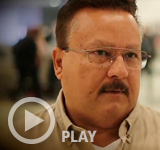 |  | 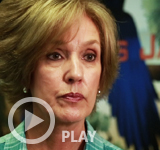 | 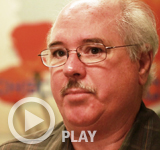 |
Rider Voices
The whole thing started shaking. I looked out the door and the marble platform was also moving—it was like an elephant doing a belly roll at the circus. —SHIRLEY AIVAZIAN had just stepped into a BART car at 19th Street/Oakalnd station when the quake hit | |
I joined a caravan of people helping to move the food. I'm sure there are many people in Oakland who are thankful that BART was open and running so quickly and capable of carrying these hot meals under the Bay. —LEE TRAMPLEASURE helped Project Open Hand SF transport food to the Red Cross shelter in Oakland | |
My car seemed to lift up off the ground and slam us down ... The train operator told us there had been an earthquake and that we would slowly limp into the station ... No one had cellphones at the time. Lines were 30 people deep, at least, for the few pay phones. Commuters' frustrations calmed down once news trickled down the lines of the damage to the bridge, Marina District and the freeway. —CINDY WELLER was on a train approaching MacArthur Station |
